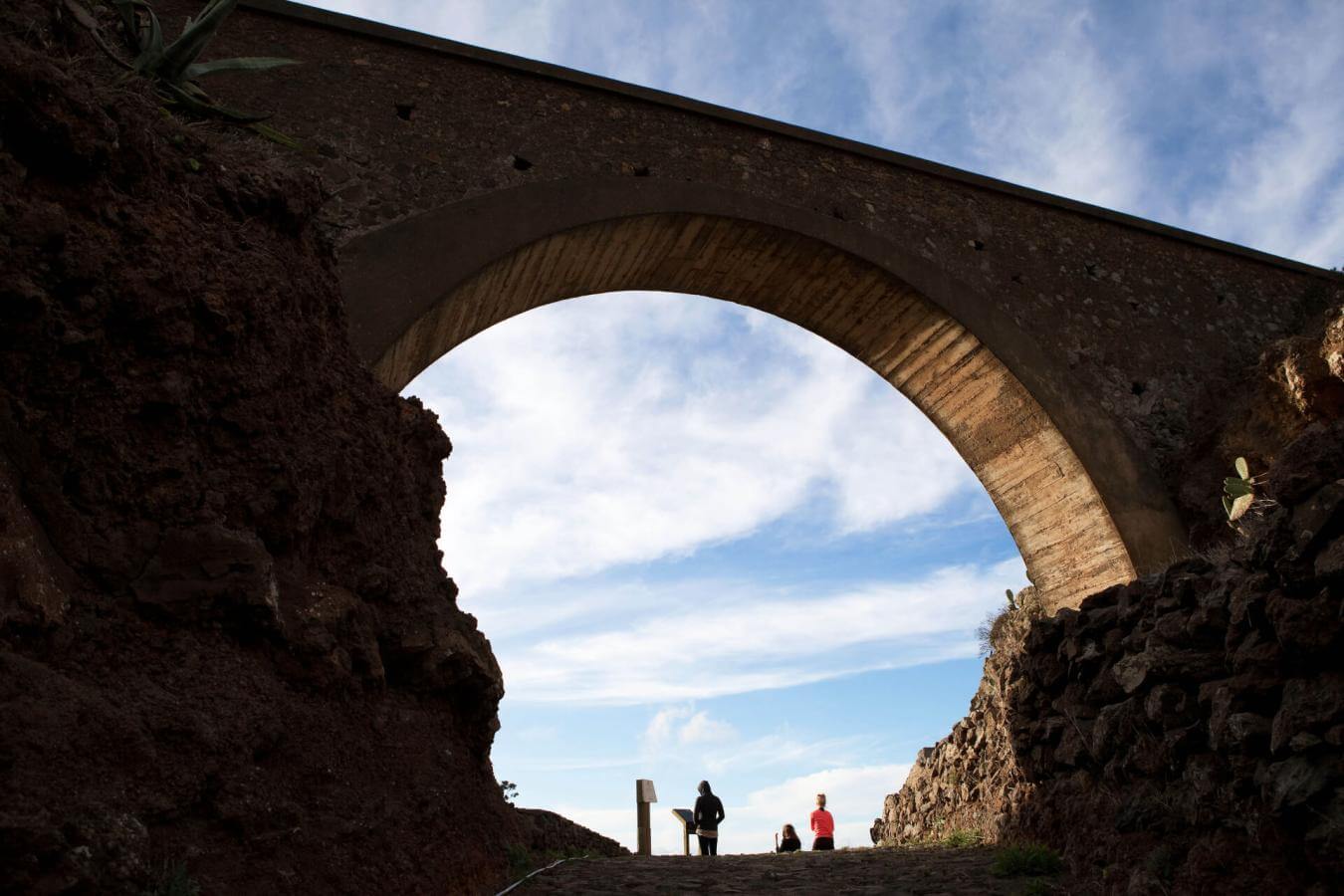


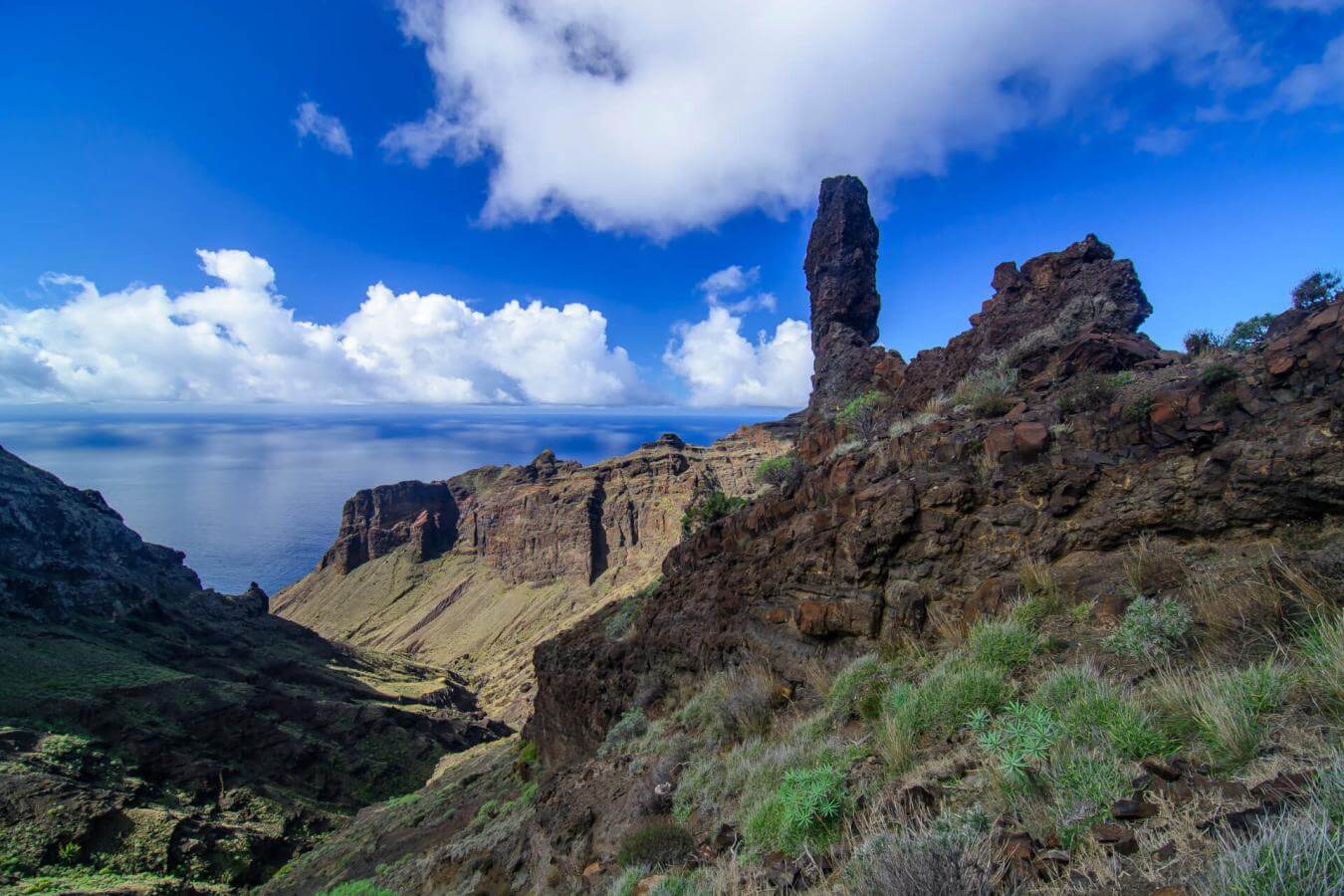

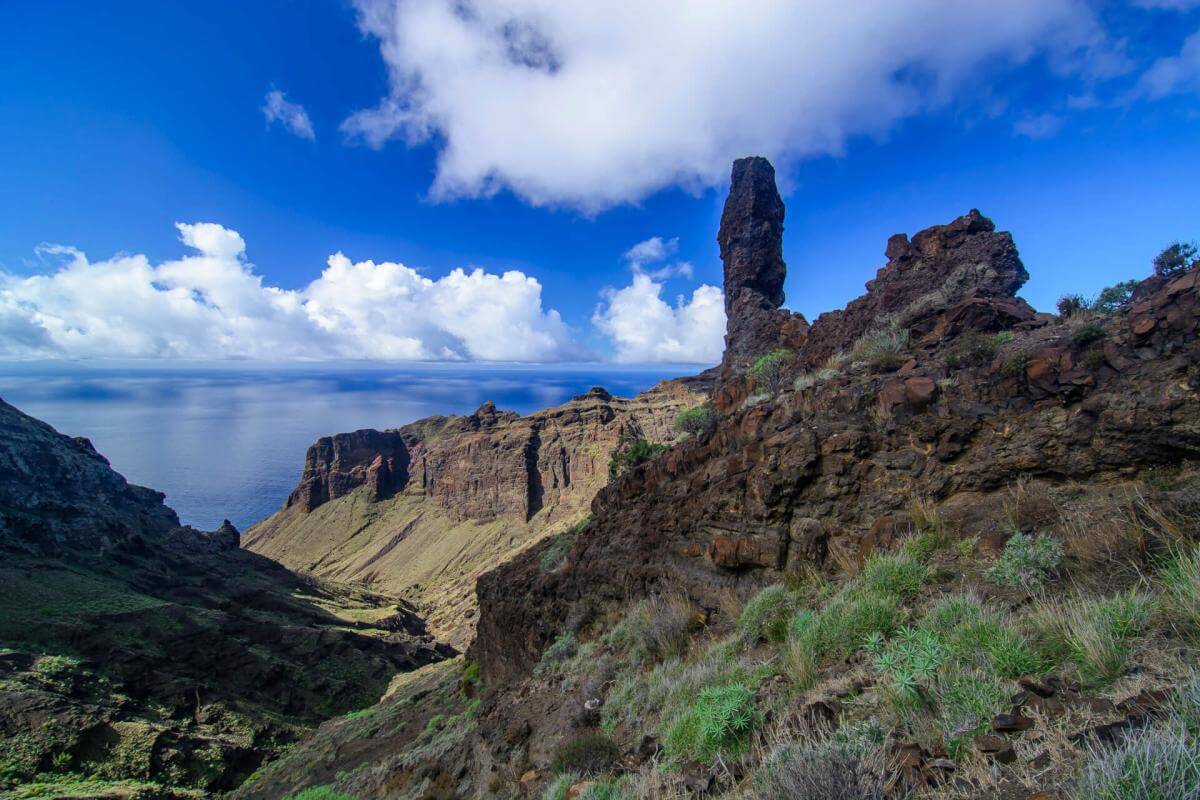
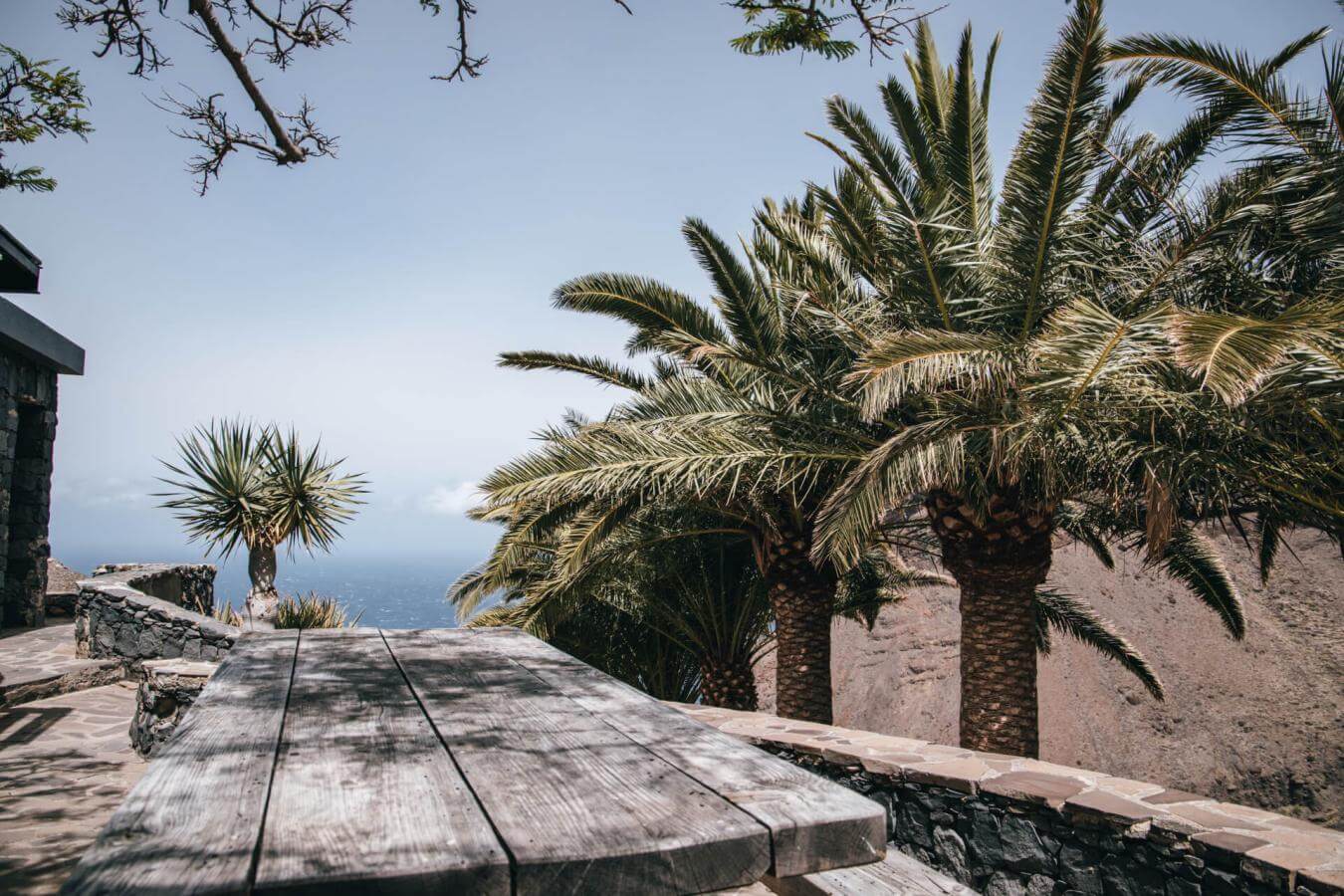

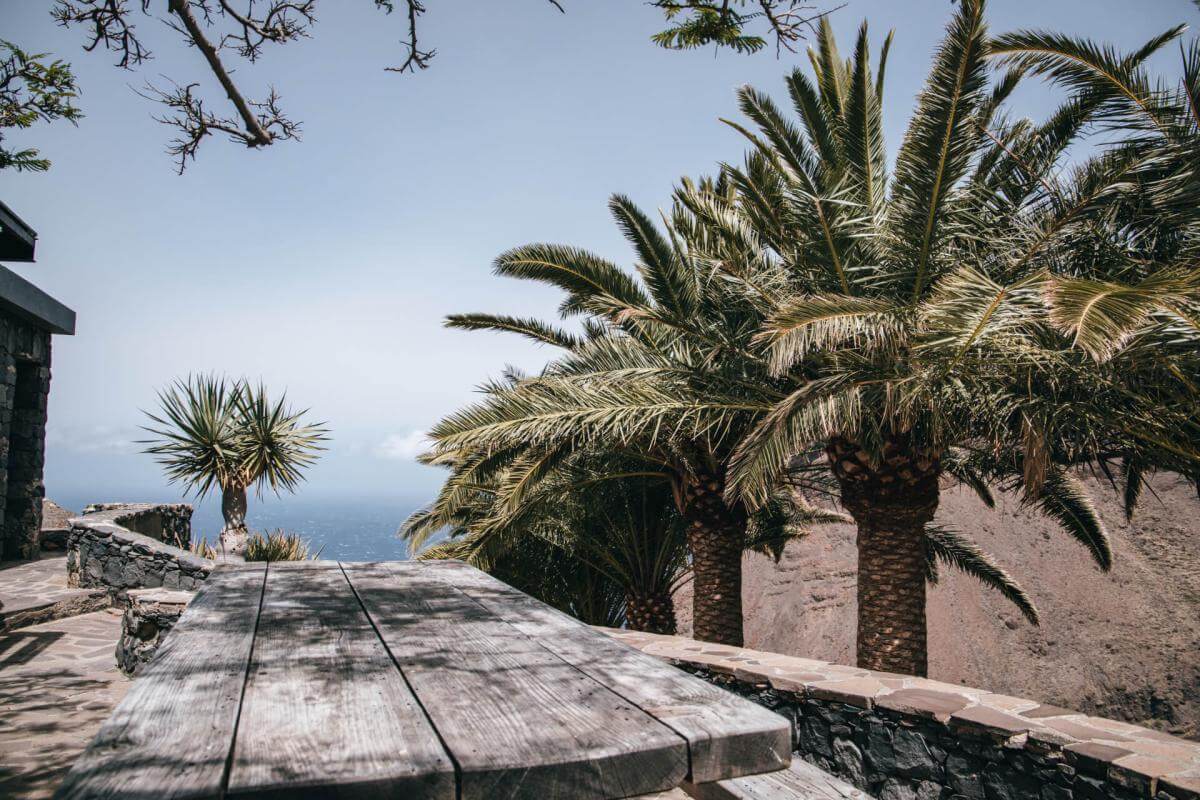
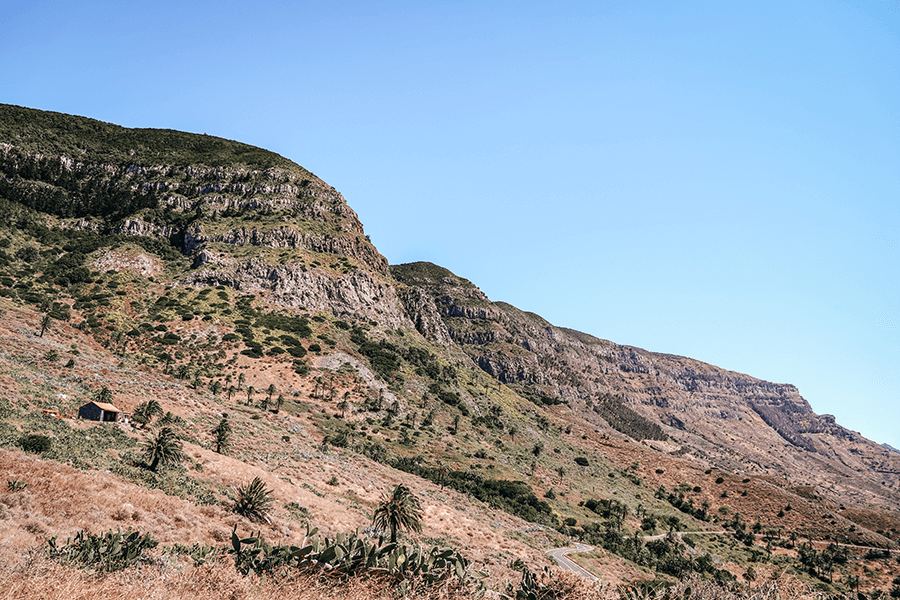
Distance from Point A to Point B: First stage / Mirador del Santo – Taguluche, 1.7 km
This stage begins at the Mirador del Santo in Arure, offering a spectacular panorama of the Taguluche Valley, where palm groves, agricultural terraces and volcanic terrain capture the essence of rural life in La Gomera. From here, the path descends along ancient routes used for centuries, surrounded by hillsides, palm groves and farmland that show how the people of La Gomera have made the most of every corner of the landscape.
The route passes natural landmarks such as Lomo del Carretón and Montaña de Tejeleche, crosses the cool “sponge forest”, and descends into an increasingly fertile valley. The stage ends in Taguluche, an isolated and charming hamlet that preserves its agricultural tradition intact amid century-old terraces and palm groves.
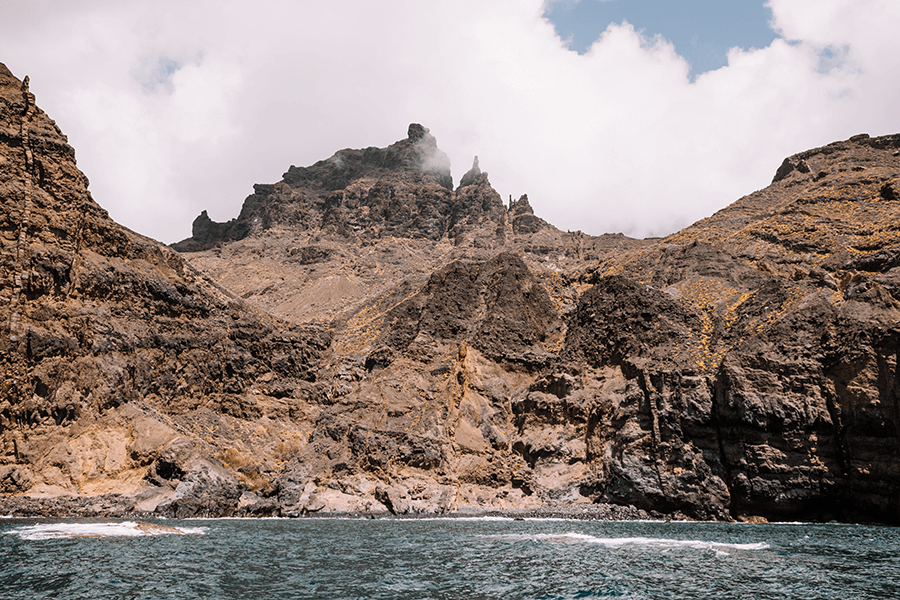
Distance from Point B to Point C: Second stage / Taguluche – Playa de Guariñén, 2.3 km
Taguluche is a secluded and charming valley that preserves some of the most valuable testimonies of La Gomera’s history. The visit begins at its Indigenous cemetery, a sacred site that connects with the island’s pre-Hispanic roots. The valley was also an important agricultural centre, home to former tomato-packing facilities and a long tradition of palm honey production, which still survives thanks to small local producers.
In the hamlet, visitors can enjoy traditional Gomero cuisine at its local restaurant and visit the Church of Buen Viaje, a small temple deeply cherished by the community. The experience continues with a stop at the Portillo de Mona winery, where wines made from native grape varieties are produced in a unique rural setting.
The route then heads towards the old Pejerreyes Jetty, a reminder of the valley’s commercial past, and ends at the quiet Playa de Guariñén — a hidden corner perfect for unwinding after the walk and enjoying the silence, the sea and the cliffs of La Gomera’s southwest.
- Never leave waste of any type lying around, including cigarette butts. Leftover food leads to a proliferation of rats and wild cats, which pose a serious threat to the fauna.
- Respect the animals. Do not bother them or feed them. If you see an injured specimen, you can call the emergency number: 112. Do not pick flowers or plants.
- Do not pick up or take away stones or any other item from the natural environment. And do not move them to pile them up into sadly famous 'towers'.
- Respect the signposting along trails. Leaving the set paths causes damage to the environment and could also be dangerous for you and anyone with you.
- It is safer to keep your pet on a lead.
- Try not to alter the peace of the environment with excessive noise (loud music, yelling, etc.).



